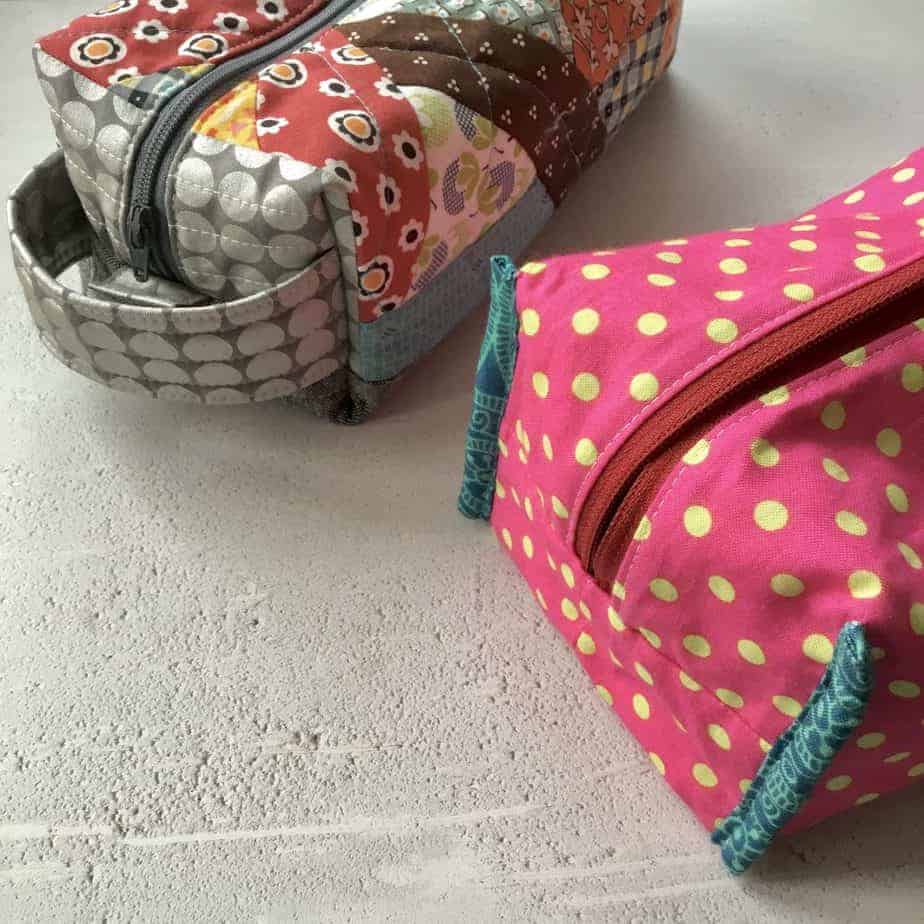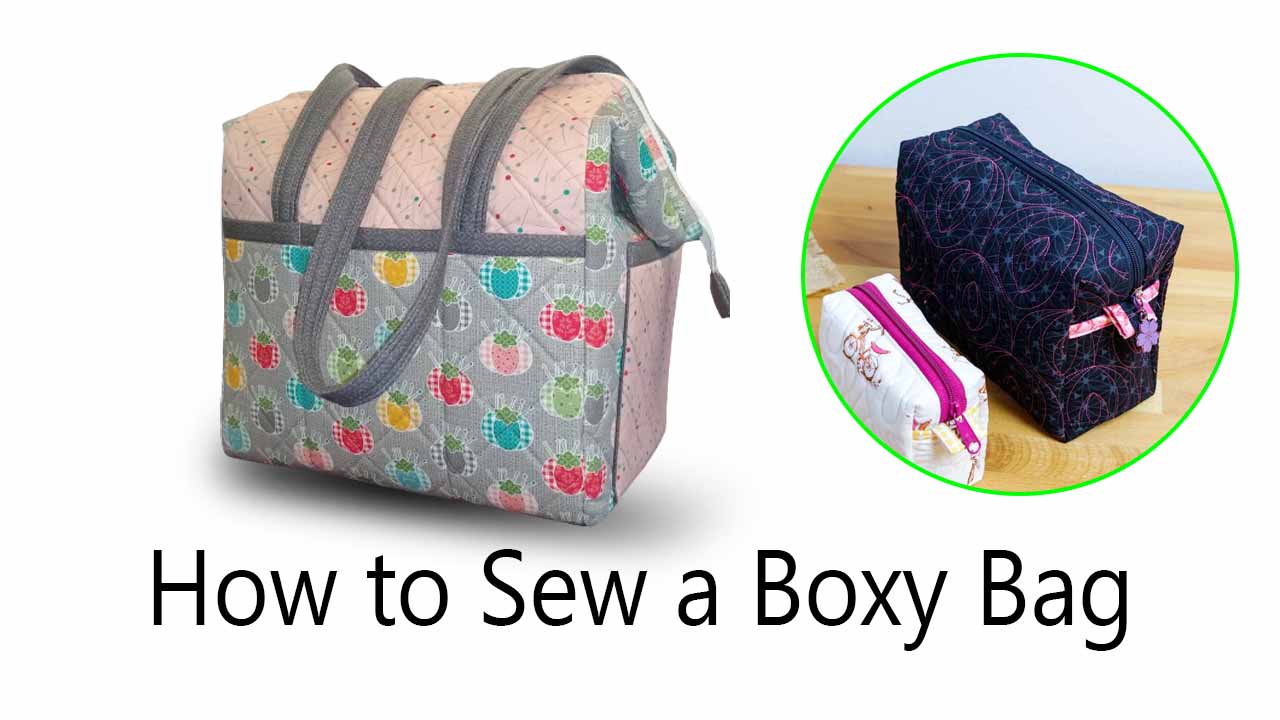How to Sew a Boxy Bag? To sew a Boxy bag, gather your materials and measure and cut the fabric as specified in the pattern, then sew the pieces together following the instructions provided. We will cover a step-by-step guide on how to sew a boxy bag, offering tips and tricks along the way.
Whether you’re a sewing beginner or have some experience, this guide will help you create a stylish and practical boxy bag that you can use for various purposes. So without further ado, let’s dive into the world of boxy bags and learn how to create your very own!
Choosing The Right Fabric For Your Boxy Bag
To sew a boxy bag, choosing the right fabric is crucial. When selecting the fabric, consider both its durability and weight. You want a fabric that will withstand regular use and hold up well over time. Additionally, the weight of the fabric will affect the structure and shape of the bag. Opt for a fabric that is not too heavy but still provides enough stability.
Another aspect to consider is the visual appeal of the fabric. Choose fabrics with vibrant patterns or colors that will make your bag stand out. This adds a fun and stylish element to your finished product.
Lastly, select fabrics that are easy to work with. This will make the sewing process smoother and more enjoyable. Fabrics like cotton, canvas, or denim can be great choices as they are commonly used for bag-making and offer a good balance of durability and ease of handling.
By taking these factors into account, you can ensure that the fabric you choose for your boxy bag will be both practical and visually pleasing.

Credit: fabricandflowers.co.uk
Measuring And Cutting The Fabric
Gathering all the necessary materials is the first step in measuring and cutting the fabric for your boxy bag. Make sure you have a measuring tape, fabric scissors, pins, and a marking tool.
When measuring and marking the dimensions for your bag, you want to be precise. Measure the length, width, and height of the boxy bag you desire. Use the measuring tape to accurately mark these dimensions on the fabric.
Once the dimensions are marked, it’s time to cut the fabric. Take your fabric scissors and carefully cut along the marked lines. Be sure to cut as accurately as possible to ensure all sides of the bag are straight and even.
Sewing The Boxy Bag
Prepare the sewing machine and thread: Before starting to sew the boxy bag, make sure your sewing machine is ready for use. Check if it has a full bobbin and is threaded correctly. Choose the appropriate thread color for your fabric.
Stitch the fabric panels together: Lay out the fabric panels for the bag exterior, right sides facing each other. Pin the sides and bottom edges together and sew them using a straight stitch. Trim the seam allowance and press the seams open.
Sew the lining and create pockets if desired: Repeat the same process for the lining fabric, ensuring the right sides are facing each other. If you want to add pockets to the lining, sew them on before attaching the lining to the bag exterior.
Boxy Bag Price and Size
The Boxy Bag from the Solid Colors Collection is priced at $28.00 USD, and it is available in the color Pink Peach. The bag measures approximately 7″ long x 3″ wide x 4″ high.
Adding Handles And Fasteners
When sewing a boxy bag, one important step is to add handles and fasteners. To determine the handle length and type, consider your personal preference and the intended use of the bag. Some common handle types include fabric handles, leather straps, or even repurposed materials like belts or chains.
Once you have decided on the handle type, attach them securely to the bag using strong stitches or rivets. This will ensure that the handles can withstand the weight of the bag and any items inside. Furthermore, you may also want to add a zipper or button closure to the bag for added security.
This will prevent items from falling out or getting lost while you carry the bag. By considering these steps, you can successfully add handles and fasteners to your boxy bag.
Finishing Touches And Personalization
To give your boxy bag a professional and polished finish, start by trimming any excess threads and securing loose ends. This step will ensure that your bag looks neat and tidy.
Next, press the bag using an iron or steamer. This will help to remove any wrinkles and creases, giving your bag a smooth and crisp appearance. Make sure to use the appropriate heat setting for the fabric you are working with.
If desired, you can add additional embellishments or decorations to personalize your boxy bag. This could be anything from embroidered initials, decorative buttons, or even fabric patches. Get creative and make your bag unique!
Remember, the finishing touches and personalization of your boxy bag can make a world of difference in its overall look and feel. Take your time with these steps and enjoy the process of creating a bag that is both functional and stylish.
Tips And Tricks For A Professional Finish
When sewing a boxy bag, it is important to pay attention to the details in order to achieve a professional finish. One tip to give your bag structure is to use interfacing. Interfacing is a layer of material that is sewn into the bag fabric to provide support and stability. It is usually ironed onto the wrong side of the fabric before sewing.
Another technique to enhance durability is topstitching. Topstitching is a decorative stitch that is sewn on the right side of the fabric, often along seams or edges. It not only adds strength to the bag but also gives it a polished look. Lastly, don’t be afraid to experiment with different fabrics and designs. This allows you to showcase your creativity and create unique bags that stand out.
Troubleshooting Common Issues
Dealing with sewing machine tension problems: Sewing machine tension issues can cause a lot of frustration, but they can usually be resolved with a few simple steps. First, check if the upper thread is properly threaded through the machine, making sure it is securely in the tension disks and the thread is correctly and evenly wound on the bobbin. If the tension is still off, try adjusting it slightly, either by loosening or tightening the tension dial.
Fixing uneven stitches: Uneven stitches can occur due to various reasons. One common problem is improper feeding of the fabric. Make sure to feed the fabric evenly and smoothly without pulling or pushing too hard. Another issue may be the needle. Consider replacing it with a new one as a bent or dull needle can cause skipped stitches. Lastly, check if the tension is properly adjusted as mentioned earlier.
Rectifying fabric puckering during sewing: Fabric puckering is often the result of incorrect machine settings or improper technique. First, double-check that you are using the correct type and size of needle for the fabric you are working with. Additionally, try reducing the pressure of the presser foot or adjusting the stitch length. It may also help to use a stabilizer or interfacing to provide additional support to the fabric during sewing.

Care And Maintenance Of Your Boxy Bag
To ensure that your boxy bag stays in great condition for years to come, proper care and maintenance are essential. Cleaning instructions may vary based on the fabric type of your bag. For cotton or canvas bags, spot cleaning with a mild detergent and warm water is usually sufficient. Leather or suede bags require special care and should be cleaned with a leather cleaner and conditioner.
For bags with delicate fabrics such as silk or satin, it’s best to consult a professional cleaner to avoid any damage. In addition to regular cleaning, proper storage is important to maintain the bag’s shape. Avoid overstuffing the bag, as it can lead to distortion. Instead, consider filling the bag with tissue paper or bubble wrap to preserve its structure. Furthermore, protect your bag from excessive sunlight and humidity to prevent color fading or mildew.
If you notice any minor damages or wear, it’s recommended to address them promptly. For small tears or loose threads, use a needle and thread to sew them back together. You can also apply a small amount of fabric glue to secure loose embellishments. If the damage is more extensive, it’s advisable to seek professional repair services.
Creative Ideas For Boxy Bag Variations
When sewing a boxy bag, there are various creative ideas that can be explored to add variations to this popular accessory. One option is to incorporate exterior pockets or compartments to increase functionality and make it easier to organize belongings. These additional storage spaces can be sewn on the front, sides, or back of the bag, providing convenient access to frequently used items.
Another creative idea is to design a reversible boxy bag. By choosing two contrasting fabrics and sewing them together, you can create a bag that can be flipped inside out, offering two different looks in one. This adds versatility to the bag and allows you to match it with different outfits or occasions.
Furthermore, you can experiment with different closure methods to enhance the functionality and style of the bag. This can include using zippers, buttons, magnetic snaps, or even drawstrings. Each closure method brings its own unique touch to the bag and can cater to personal preferences and needs.
Frequently Asked Questions Of How To Sew A Boxy Bag
How Do You Make A Boxy Bag?
To make a boxy bag, start by cutting out the fabric and interfacing it according to the pattern. Sew the sides and bottom together, then attach the lining fabric. Add the handles and box the corners for a professional finish. Finally, turn the bag right side out and press for a polished look.
What Is The Best Fabric For A Boxy Bag?
The best fabric for a boxy bag is a medium-weight cotton or canvas fabric. These fabrics are sturdy and hold their shape well, making them ideal for a structured bag. Avoid using fabrics that are too flimsy or stretchy, as they may not provide the necessary structure and stability for the bag.
Can I Customize The Size Of The Boxy Bag?
Yes, you can customize the size of a boxy bag to fit your needs. Simply adjust the dimensions of the fabric pieces when cutting them out, keeping in mind that you will still need enough fabric for seam allowances. It’s a great opportunity to make the bag larger or smaller depending on your preference.
Conclusion
Sewing a boxy bag is a fun and creative project that allows you to showcase your sewing skills. With the right materials and following the step-by-step instructions provided in this blog post, you can easily create a stylish and functional bag for yourself or as a gift.
Remember to choose a fabric that speaks to your personal style and have fun experimenting with different colors and patterns. Sewing a boxy bag is a great way to unleash your creativity and make something practical and beautiful at the same time.
Happy sewing!
You’ll also like the latest post and read more!
- Are Ziploc Bags Waterproof? Yes or No
- Knapsack Vs Backpack: Who Is Best Bag?
- Where Should You Store Full Garbage Bags
- Best Golf Bag Embroidery Ideas

Welcome to Old Money Bag, your premier destination for the finest and most exquisite luxurious bags. Owned and curated by Blog: Leslie Palacio, our website is dedicated to bringing you a collection of handpicked, high-end bags that exude elegance and sophistication.

